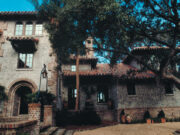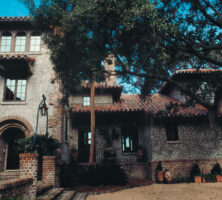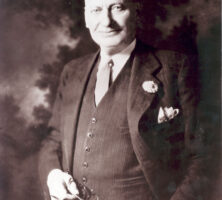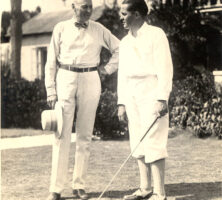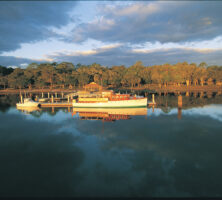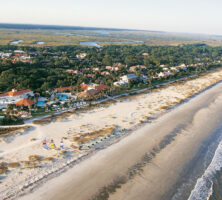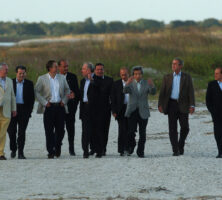The Sea Island Company was a family-owned hospitality and real estate corporation that was founded in 1926.
Its major operations included the management of the Cloister resort on Sea Island, which it owned, and the development and sale of real estate on Sea Island and St. Simons Island.
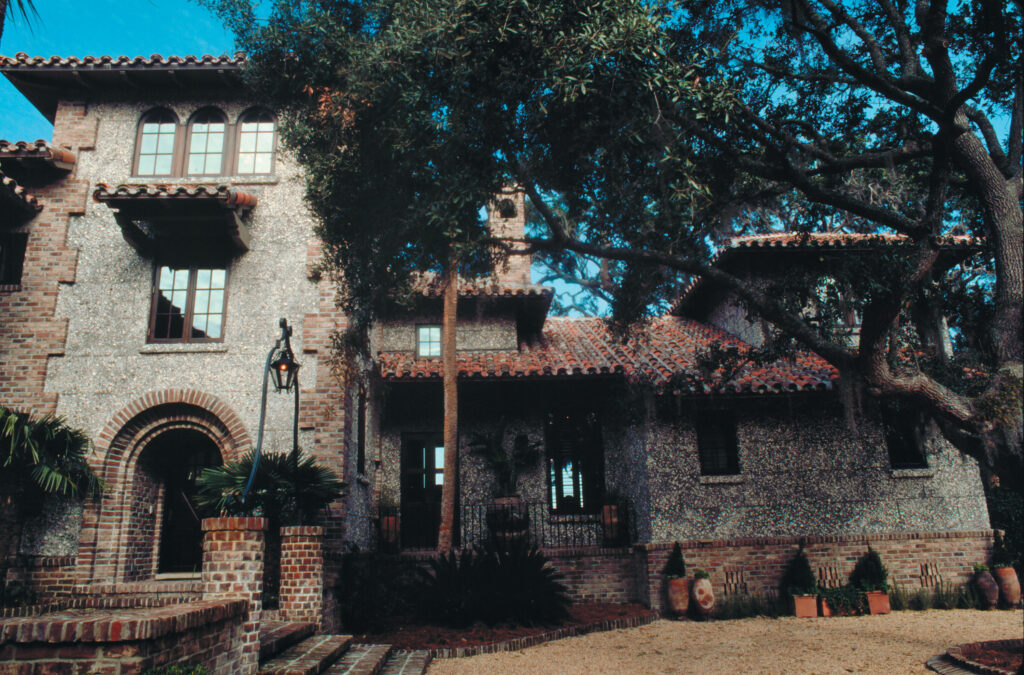
The company was established by the Ohio automobile and aviation pioneer Howard Coffin as Sea Island Investments, Inc. In 1926 he began buying tracts of land on St. Simons, followed shortly thereafter by the purchase of neighboring Long Island, which he soon renamed Sea Island. Having acquired Sapelo Island in 1912 as a coastal retreat, Coffin recognized the potential for development of Georgia’s coastal islands as a tourist destination. He hired Walter Travis, the first U.S. golfer to win the British Amateur Championship, to design a golf course on St. Simons at the former Retreat Plantation, site of a nineteenth-century cotton plantation. English course architects Harry Colt and Charles Hugh Alison later reworked it and added a nine-hole seaside course. Coffin envisioned a beach resort and cottage colony on Sea Island and to that end commissioned the noted Palm Beach, Florida, architect Addison Mizner to design a hotel in the Spanish style. At Mizner’s suggestion, Coffin named it the Cloister.
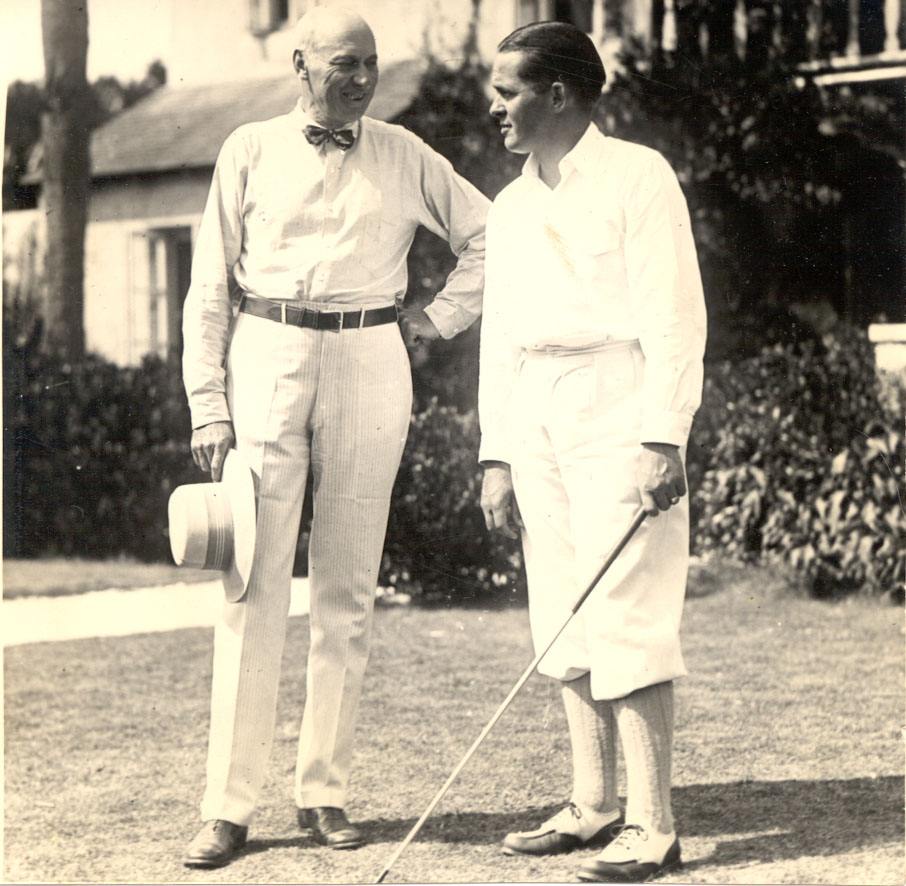
To make the islands more accessible to tourists, Coffin financed repairs to the causeway between the mainland and St. Simons, built twenty-two miles of roads, which he later turned over to the county, and started a public bus line between Savannah and Jacksonville, Florida, by way of Brunswick. He also brought modern services to the islands, including the first electric power plant, a water system, and telephone exchange.
In 1928 Coffin turned over management of the Sea Island Company to his young cousin Alfred W. Jones, thus beginning a tradition of family management. Jones successfully steered the company through the Great Depression and assumed leadership upon Coffin’s death in 1937. Alfred W. Jones Jr. succeeded his father as president of the company in 1966. In 1995 the company was named National Family Business of the Year and in 1997 Alfred “Bill” Jones III was appointed chairman and chief executive officer.
In the early 2000s the property underwent several design and restoration projects under the direction of architect Peter Capone. These pre-recession expansions went on to hurt the company during the financial crisis of 2008, when they lost an estimated 97 million in that year and an additional 78 million in the following. The Sea Island Company filed for bankruptcy in 2010 and was later acquired by a coalition of investors including Oaktree Capital Management, Avenue Capital Group, Starwood Capital, and Anschutz Corp. for $212.4 million. In 2016 one of the four private investors, Anschutz Corp., took over sole ownership of the company.
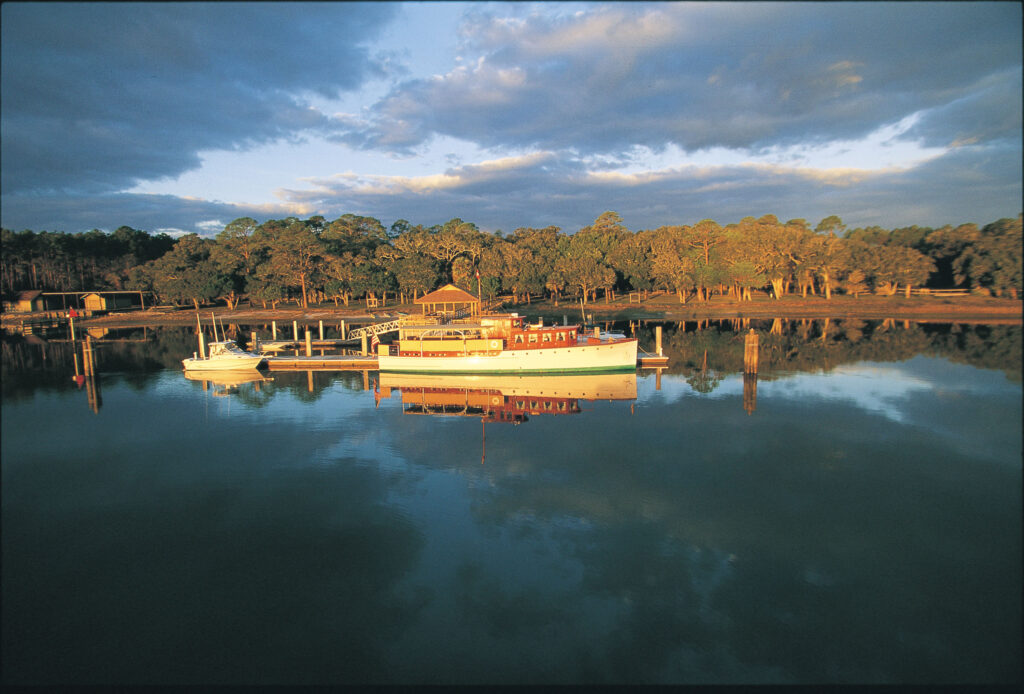
Under the ownership of Howard Coffin and the Jones family, the Sea Island Company had a long-standing tradition of providing land for such public uses as roads, parks, schools, churches, and health facilities. A commitment to the preservation of historic sites was demonstrated throughout the company’s existence. In 1936 Howard Coffin and Alfred Jones Sr. spearheaded the effort to have Fort Frederica declared a national monument. The company, in association with the National Science Foundation, funded archaeological studies of Cannon’s Point Plantation on St. Simons Island in the 1970s. A number of tabby ruins from the plantation era on St. Simons were preserved and restored, including the hospital for enslaved laborers at Retreat Plantation. In 1995 the Georgia Trust for Historic Preservation presented the company with its award for Outstanding Achievement in Historic Preservation. The company also demonstrated a commitment to the preservation of Georgia’s natural resources. In 1996 the Jones family donated 367-acre Carr’s Island in the Altamaha River delta to the Nature Conservancy of Georgia.


